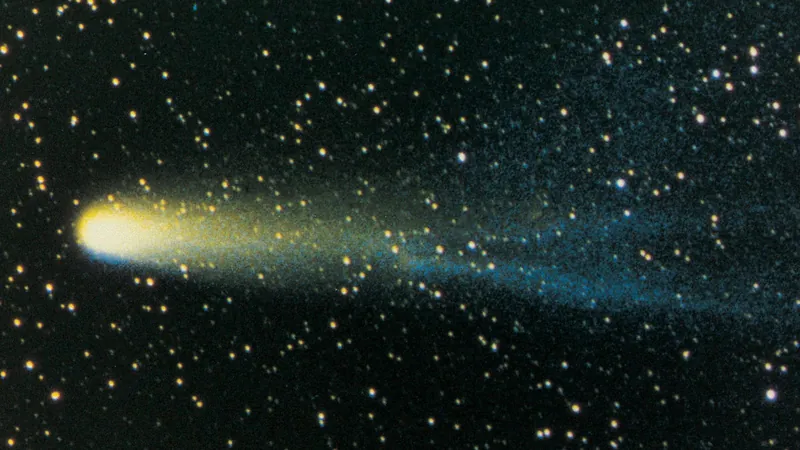
Don’t Miss the Orionids Meteor Shower: Halley’s Comet Lights Up the Sky!
2024-09-26
Author: Wei
Astrophysics enthusiasts, mark your calendars! An exhilarating cosmic spectacle is just around the corner as we approach one of the year's most anticipated celestial events: the Orionids meteor shower, linked to the legendary Halley’s Comet. Although Halley’s itself may not be visible right now, the remnants it leaves behind are about to put on a stunning show for stargazers everywhere.
Beginning from September 26 and running until November 22, 2024, the Orionids will reach their peak from the night of October 20 to the early hours of October 21. During this time, on a clear, dark night, skywatchers might witness an impressive display of ‘shooting stars’ — typically around 20 meteors per hour, although some years can see rates soar to as many as 75!
To maximize your viewing experience, aim for dark locations away from city lights, ideally at an International Dark Sky Park. This year, be mindful of the waxing gibbous moon, which may diminish visibility for the Orionids around peak night. Early evening might offer the best opportunity to catch these meteors before the moon rises fully.
What makes the Orionids particularly fascinating is their origin: the faint, icy dust and debris that Halley’s Comet has shed over centuries. This famous comet, which last visited the inner solar system in 1986, is not expected to return until 2061, but its annual meteor showers are a lasting legacy. The meteors will blaze across the Earth's atmosphere at staggering speeds of around 41 miles per second!
Interestingly, the Orionids are named for their radiant point in the Orion constellation. Around midnight, observers can spot Orion rising in the eastern sky, although the meteors will be visible anywhere overhead.
Here are some stellar tips from NASA on how to make the most of your meteor shower experience: - Choose a dark location away from light pollution. - Find a clear, unobstructed view of the night sky. - Dress warmly, as temperatures can drop significantly. - Be patient—settle in for at least 30 minutes, ensuring you're comfortable on a reclining chair or pad. - Leave telescopes and binoculars at home, as they limit your field of vision. - Protect your night vision by avoiding bright screens; use red lights instead.
So get ready to witness this celestial spectacle as it graces our skies once again. Followers on social media can keep updated with daily comet tracking tips and find excitement in the wonders of the universe! Clear skies and open eyes await you—don’t let this opportunity pass you by!



 Brasil (PT)
Brasil (PT)
 Canada (EN)
Canada (EN)
 Chile (ES)
Chile (ES)
 España (ES)
España (ES)
 France (FR)
France (FR)
 Hong Kong (EN)
Hong Kong (EN)
 Italia (IT)
Italia (IT)
 日本 (JA)
日本 (JA)
 Magyarország (HU)
Magyarország (HU)
 Norge (NO)
Norge (NO)
 Polska (PL)
Polska (PL)
 Schweiz (DE)
Schweiz (DE)
 Singapore (EN)
Singapore (EN)
 Sverige (SV)
Sverige (SV)
 Suomi (FI)
Suomi (FI)
 Türkiye (TR)
Türkiye (TR)